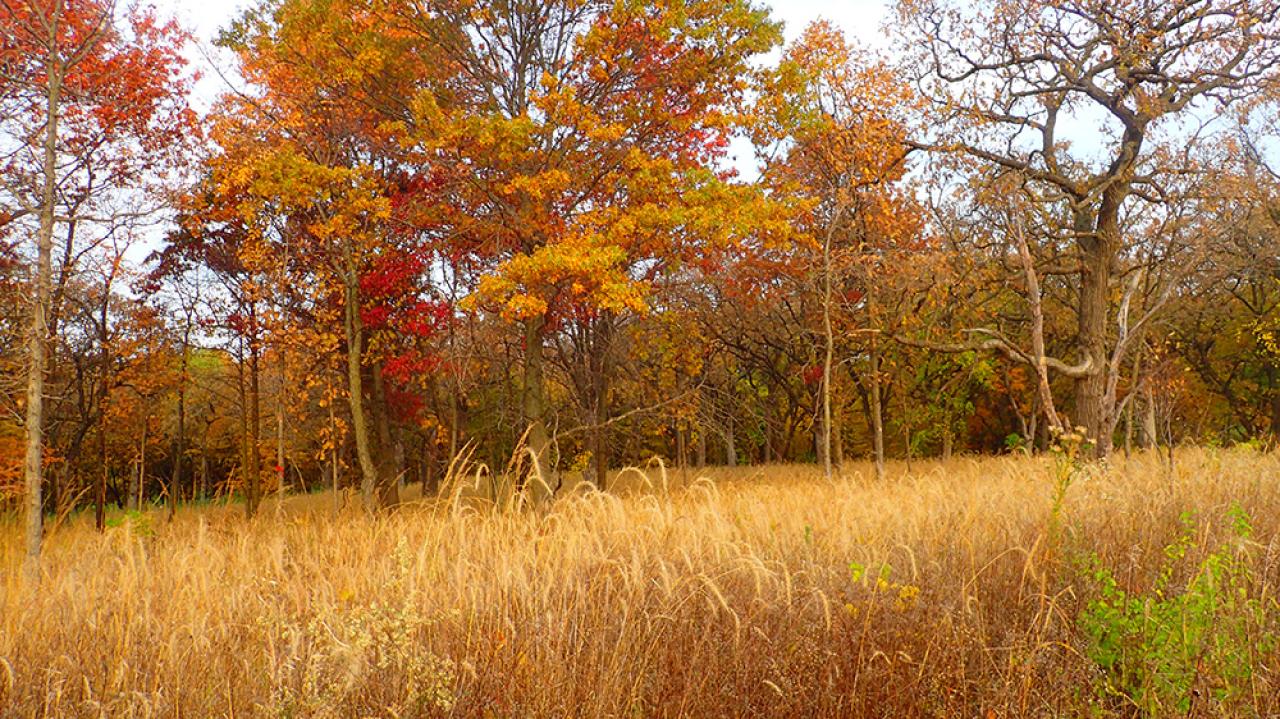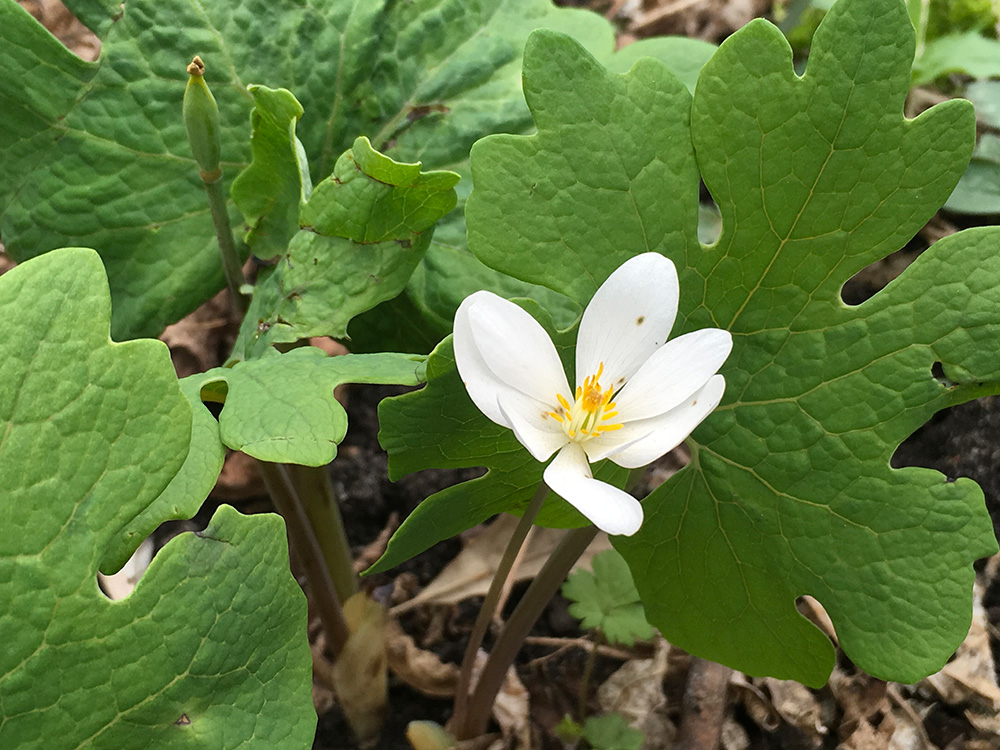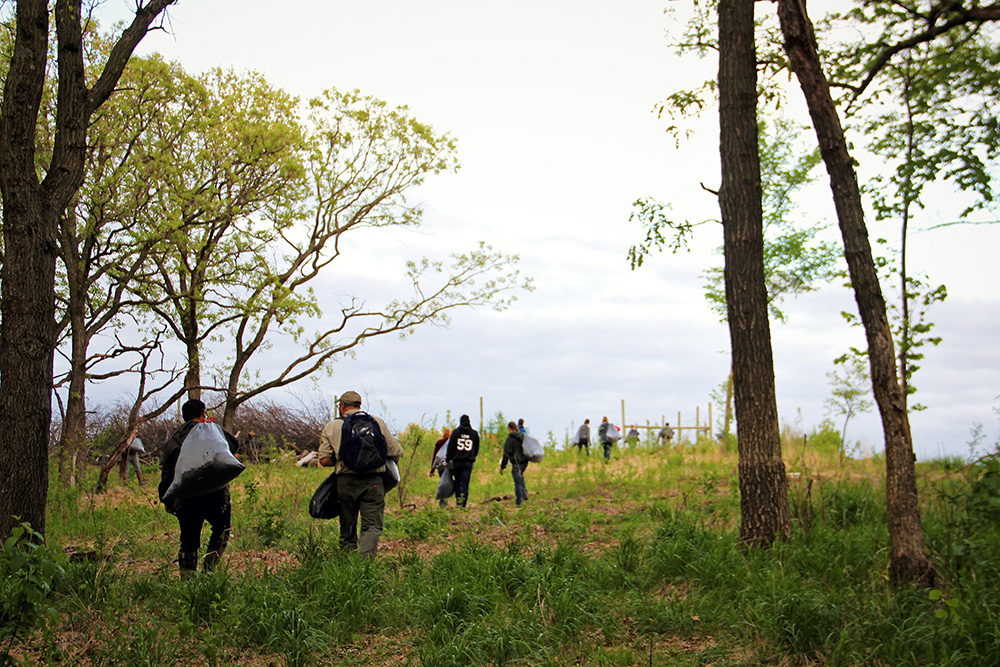South Branch Vermillion River Aquatic Management Area

Where is the South Branch Vermillion River AMA?
This Minnesota Department of Natural Resources property is located along Highway 52 in Vermillion Township. You might drive right past the South Branch Vermillion River Aquatic Management Area (AMA). But you might notice the Vermillion River itself, which runs east-west under the busy highway.
The South Branch of the Vermillion River flows north, passing Hampton Woods Wildlife Management Area, another FMR restoration site, before meeting with the main stem of the Vermillion River at 200th Street.
Just past that river crossing, off the highway on 200th Street East, is a small parking lot with an Aquatic Management Area sign on the south side of the road. Past the restored prairie surrounding the parking lot is the South Branch of the Vermillion River — a small, cold-water stream that feeds the river's main stem.
The public is welcome to visit the South Branch Vermillion River Aquatic Management Area. (See the Minnesota Department of Natural Resources website for more info.)
Our work takes place on Dakota homelands. Learn more.
What's special about the South Branch Vermillion River Aquatic Management Area?
The South Branch of the Vermillion River's once-channelized banks pass through a primarily agricultural landscape, though wooded buffers now flank much of the stream.
The Minnesota Department of Natural Resources (DNR) has been acquiring land along both the South Branch and the main stem of the river for years, helping to protect the only trout stream in an urban metro area in the entire United States. They've also recently completed a re-meander of the South Branch as it flows through the AMA, fostering much-needed spawning, feeding and hiding habitat by building riffles and adding woody material along the banks.
But only recently has the DNR started paying attention to the upland habitat at their AMAs, rightfully focusing first on improving in-stream conditions. Enter partners like FMR, who specialize in upland habitat restoration.
FMR and the DNR Fisheries program started work at this AMA in 2017, as FMR acquired grant funding from the Minnesota Environment and Natural Resources Trust Fund as recommended by the Legislative-Citizen Commission on Minnesota Resources. Despite lots of buckthorn and other woody invasive plants, it was clear that the site was no ordinary woodland. The upland areas still contained majestic, spreading bur oaks, while the riverside areas held pockets of bloodroot, trout lily and other native woodland plants.

If you visit in early spring, look for native wildflowers like this bloodroot on the forest floor near the river.
Our work at the South Branch Vermillion River Aquatic Management Area
With funding in hand, FMR hired subcontractors to execute a restoration plan our ecologists developed. FMR utilized forestry mowing to remove much of the woody undergrowth, mowing the site a second time to help control re-sprouts and newly emerged seedlings. (Learn about our buckthorn removal methods that strive to preserve native plants.)
Because we hoped to restore oak savanna on much of the site, removal didn't stop with the undergrowth. We thinned some native tree species like box elder, green ash and American elm to open the subcanopy and canopy. We even removed some pin and bur oaks to make way for wildflowers and grasses below.
Once the buckthorn was under control and more light could get through to the forest floor, we seeded native plants. We started with grasses because they grow rapidly, shading out buckthorn seedlings while also allowing us to use prescribed fire to manage the site.
Our first burn in the spring of 2021 carried through most of the savanna acres, knocking back new woody regrowth. Without that historical disturbance regime, the site had transitioned away from a sparsely treed savanna to a closed-canopy woodland. After the burn, we seeded wildflowers into the burned areas to add diversity and pollinator resources.
What was once a dark, buckthorn-dominated woodland is now an open savanna habitat full of birds, bees and other wildlife. And according to Mark Nemeth, MN DNR Fisheries Biologist, the upland restoration is also extremely important for trout populations. By increasing upland plant diversity, we also increase insect diversity and overall insect populations, adding to the available food source for trout.

We work with volunteers to remove invasive species like garlic mustard from the riverside woodland area, making way for native plants on the forest floor to restore water quality and better support wildlife. (Photo by Rich Wahls for FMR)
Throughout the project, FMR has engaged volunteers at this site, helping to seed, pull newly emerged garlic mustard and other invasive plants, and conduct other tending tasks. In recent years, FMR has also explored a partnership with the Hmong American Farmers Association, who owns the land to the east of the AMA up to highway 52. In 2021, FMR co-hosted a volunteer event where volunteers helped remove fruiting buckthorn from the property, jumpstarting restoration on the wooded acres of the farm while also protecting the restoration investment made at the AMA.
Find out more and get involved
- Volunteer with us to restore places like this across the metro or join the Vermillion Stewards. If you'd like to get notifications about volunteer events, sign up for our twice-monthly e-newsletter, Mississippi Messages.
- Learn more about trout streams.
- Contact FMR project lead Laura Domyancich-Lee.
Partners and funders for our work at the South Branch Vermillion River Aquatic Management Area
This work is made possible by the Environment and Natural Resources Trust Fund, the Laura Jane Musser Foundation, Marathon Foundation, the Minnesota Department of Natural Resources and its fisheries program, RBC Wealth Management, Xcel Energy and by our generous donors like you!

Thanks to the volunteers who have helped restore this site! (Photo by Rich Wahls for FMR)